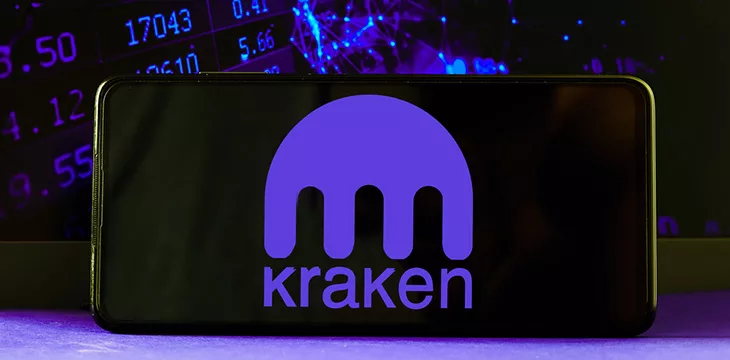The Kraken digital asset exchange has become a key fiat off-ramp for holders of Tether’s controversial USDT stablecoin, raising questions about why anyone would send cash to Tether to obtain USDT only to turn around and immediately trade that USDT on Kraken for…cash.
USDT’s market cap hit a new record this week, topping $87 billion for the first time. The past 30 days have seen around $4 billion in new USDT mints, and that’s not counting last week’s phantom minting/burning of an additional $4.3 billion in USDT (more on this later). Tether’s CTO/CEO Paolo Ardoino celebrated the new market cap record on X/Twitter, even as scrutiny of USDT’s popularity with Islamic terror groups is increasing in Washington.
Earlier this week, blockchain data analysts ChainArgos noted the increased issuance of new USDT on Justin Sun‘s blockchain Tron. Most USDT resides on Tron, well ahead of runner-up Ethereum. But ChainArgos also noted how much of this new Tron-based USDT—”roughly two out of every three recent USDT issuances (by TXN count, not by volume)”—is being sent to Kraken.
USDT trading pairs for fiat currencies now account for a serious chunk of Kraken’s overall trading volume, with USDT/EUR (15.9% as of Monday night) and USDT/USD (13%) being the top two trading pairs on the exchange. By comparison, USDT/BTC accounted for a mere 1.62% of overall volume, not much more than USDT/GBP (1.3%).
Over at Kraken’s U.S. rival Coinbase (NASDAQ: COIN), where trading volume is nearly twice Kraken’s, USDT/USD accounted for roughly the same percentage (12.1%), but the next highest fiat trade (USDT/EUR) was a mere 1% while no other USDT/fiat pair made the top-50.
ChainArgos also offered some perspective on Kraken’s re-emergence as a major recipient of new Tron-based USDT following the November 2022 implosion of Sam Bankman-Fried’s FTX exchange and its affiliated market-maker Alameda Research. At one point, Alameda was the single-largest recipient of new USDT, almost $40 billion worth, before the curtain fell on SBF’s fraudulent ‘crypto’ empire.
The Binance exchange, which remains the runner-up for the USDT recipient crown, seemed to flatline in terms of receiving new USDT following the early-2023 collapses of California’s Silvergate Bank and New York’s Signature Bank, each of which offered similar 24/7 digital asset settlement mechanisms.
Silvergate cut ties with Binance in 2021, with Signature following suit earlier this year, leading Binance to halt U.S. dollar bank deposits and withdrawals. But as ‘crypto’ has demonstrated time and again, when one backdoor closes, another manhole cover opens.
There are those who appear to believe that Kraken could serve as a pass-through for those looking to move USDT to Binance by roundabout means. Kraken has also received billions in USDT from the Bitfinex exchange, Tether’s sister company.
And yet, Kraken hasn’t sent any USDT back to Tether for redemption since May 2022. Some have gone as far as to liken Kraken to Tornado Cash, the coin-mixing service that helps obfuscate token provenance (a comparison that Kraken founder Jesse Powell would probably find flattering).
All this incestuous interplay suggests the ‘Exchange coordination’ group chat featuring Powell, Binance founder Changpeng ‘CZ’ Zhao, Justin Sun, and SBF didn’t necessarily die with the latter’s conviction.
So far, neither Powell nor Dave Ripley, the man who replaced Powell as CEO last year, have chosen to publicly comment on Kraken’s new status as a magnet for Tron-based USDT. But it couldn’t come at a worse time, given the alarm with which Washington politicians are viewing the use of Tron-based USDT by terror groups such as Hamas and Palestinian Islamic Jihad to fund their activities.
We should also mention that Kraken’s USDT ties have led to theories involving market makers, the FTX Debtors group, and (possibly) the Illuminati. But just because it sounds outlandish doesn’t mean it’s not happening. Besides, it’s not even the most alarming Tether-related incident this month.
One whale of a hiccup
On November 11, X/Twitter’ tech crypto guy’ Daniel Musanni announced that he’d discovered a truly strange episode in Tether’s minting/burning activities. Specifically, the abrupt issue on November 8 of $4.3 billion USDT followed by the burning of an identical amount a mere three minutes later. (Others also noticed this ephemeral surge.) Musanni then tracked the significant gains enjoyed by some prominent tokens the following day.
What’s more, Musanni noted that the @whale_alert X/Twitter account that traditionally issues alerts regarding new Tether mints claimed to be “experiencing technical issues” on November 8, meaning it was purposefully “not posting alerts” during the period in which this massive mint/burn occurred. Musanni is far from the only observer to suspect that Whale Alert’s occasional ‘down’ cycles are more planned than unexpected.
Coincidentally (or not), that same period saw Binance transfer $3.9 billion worth of USDT from one of its cold wallets to a hot wallet. For what purpose, we have no clue, but ChainArgos flagged this transfer as the 8th largest USDT transaction in Tron history. Others noted that this sum is very close to the amount that USDT’s market cap has increased over the past month.
Meanwhile, the market cap of Circle’s stablecoin USDC continues to shrink, slipping below $23.9 billion on Tuesday, having lost another half-a-billion or so in just the past seven days. Part of that decline is based on Kraken’s customers, who ChainArgos reports “are redeeming a whole lot of Tron USDC. Most of what they don’t redeem they send to Binance.”
It’s almost as if the other players in this game understand that, at some point, Circle is going to have to impose tighter conditions on redeeming USDC or admit the jig is up. Before that harsh new reality sets in, Tether, Justin Sun’s TUSD, and others of their ilk are falling over each other to get to the USDC redemption finish line first.
Stop the ride, we wanna get off
It seems logical to believe that all these opaque machinations are responsible for the recent pump in the fiat value of tokens like BTC and ETH, particularly since there are no other fundamentals by which to explain the sudden soar in value of any function-free beanie baby.
I mean, can anyone explain why BTC gained 40% in the past 30 days? Or why has it slumped 5% since the week began before rebounding? There’s a reason why there are professional poker players but no pro roulette players. Players you can read, cards you can count. But ‘crypto’ is beyond a black box. It’s a black hole, sucking all logic and reason into its void, along with as much retail customers/suckers’ cash that fits.
All year, the fomenters of FOMO have been piling pressure on retail customers, talking up the next halving event, insisting that BTC spot-based ETFs are imminent, pointing to the wave of bankruptcies and convictions as having performed the overdue enema the sector so clearly required, all of which means just one thing: we’re moon-bound again, baby!
But there’s no more logic to the current price pump than for any of the ones that preceded it—all of which, if you’ve forgotten, ended with disastrous dumps for small-time ‘investors’ before everyone’s memory banks were wiped and the entire crooked process began anew. It’s time to exit this crooked casino, forego the false promise of sudden wealth for doing nothing, and grow the f*ck up.
Maybe then, the rest of us can get on with building utility-focused blockchain projects without everyone suspecting that it’s only a ruse to promote some fly-by-night ‘number go up’ token.
Follow CoinGeek’s Crypto Crime Cartel series, which delves into the stream of groups—from BitMEX to Binance, Bitcoin.com, Blockstream, ShapeShift, Coinbase, Ripple, Ethereum, FTX and Tether—who have co-opted the digital asset revolution and turned the industry into a minefield for naïve (and even experienced) players in the market.
New to blockchain? Check out CoinGeek’s Blockchain for Beginners section, the ultimate resource guide to learn more about blockchain technology.








